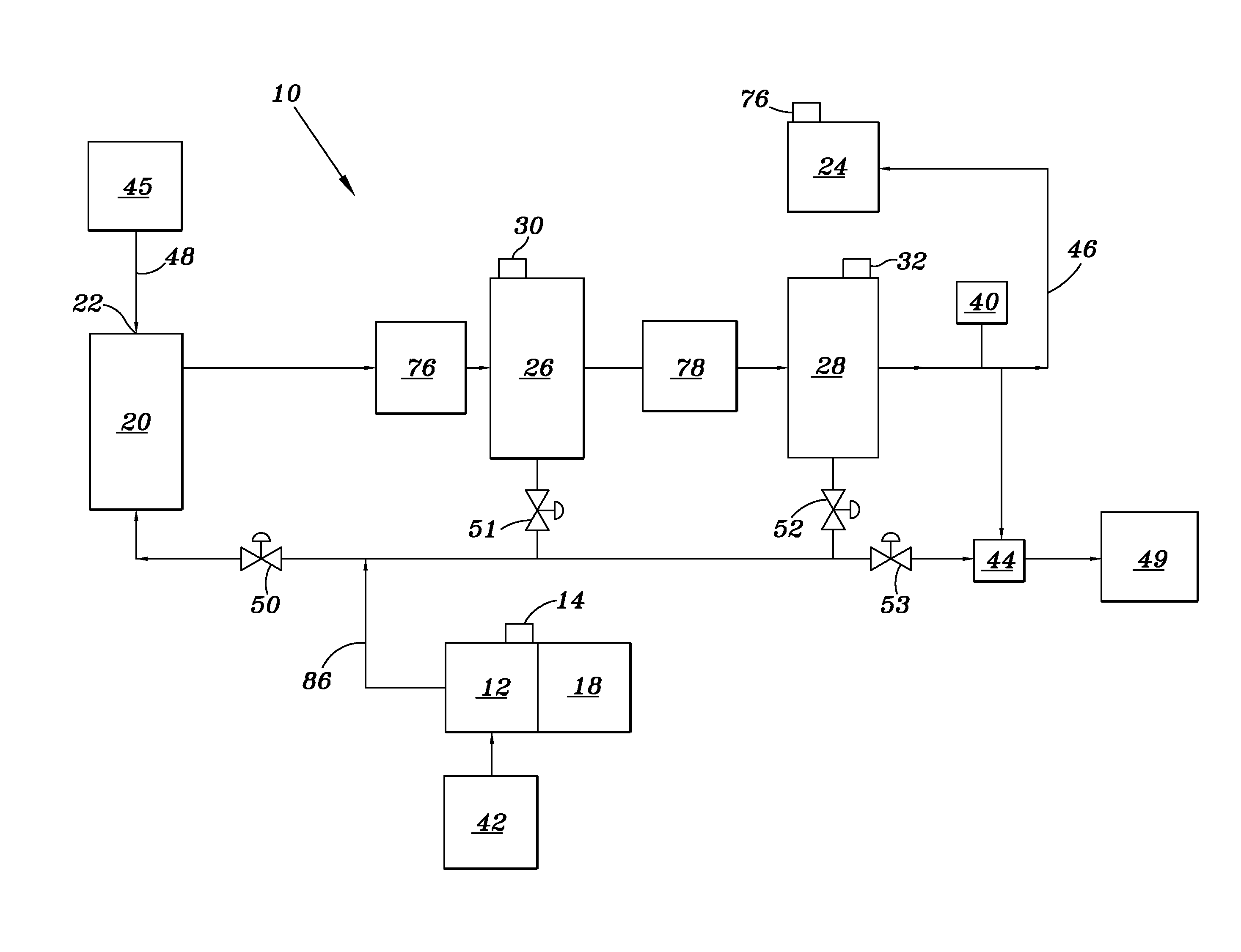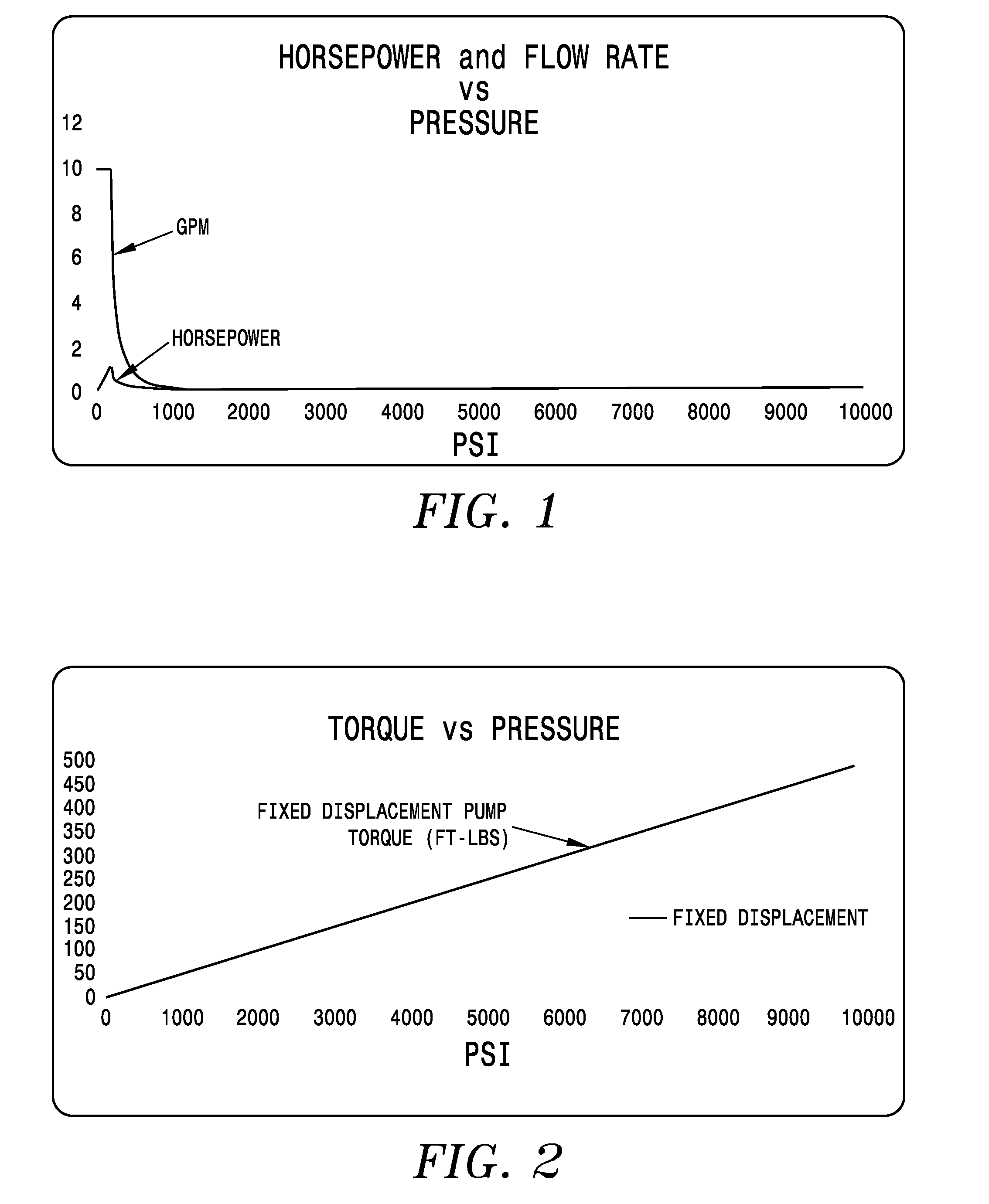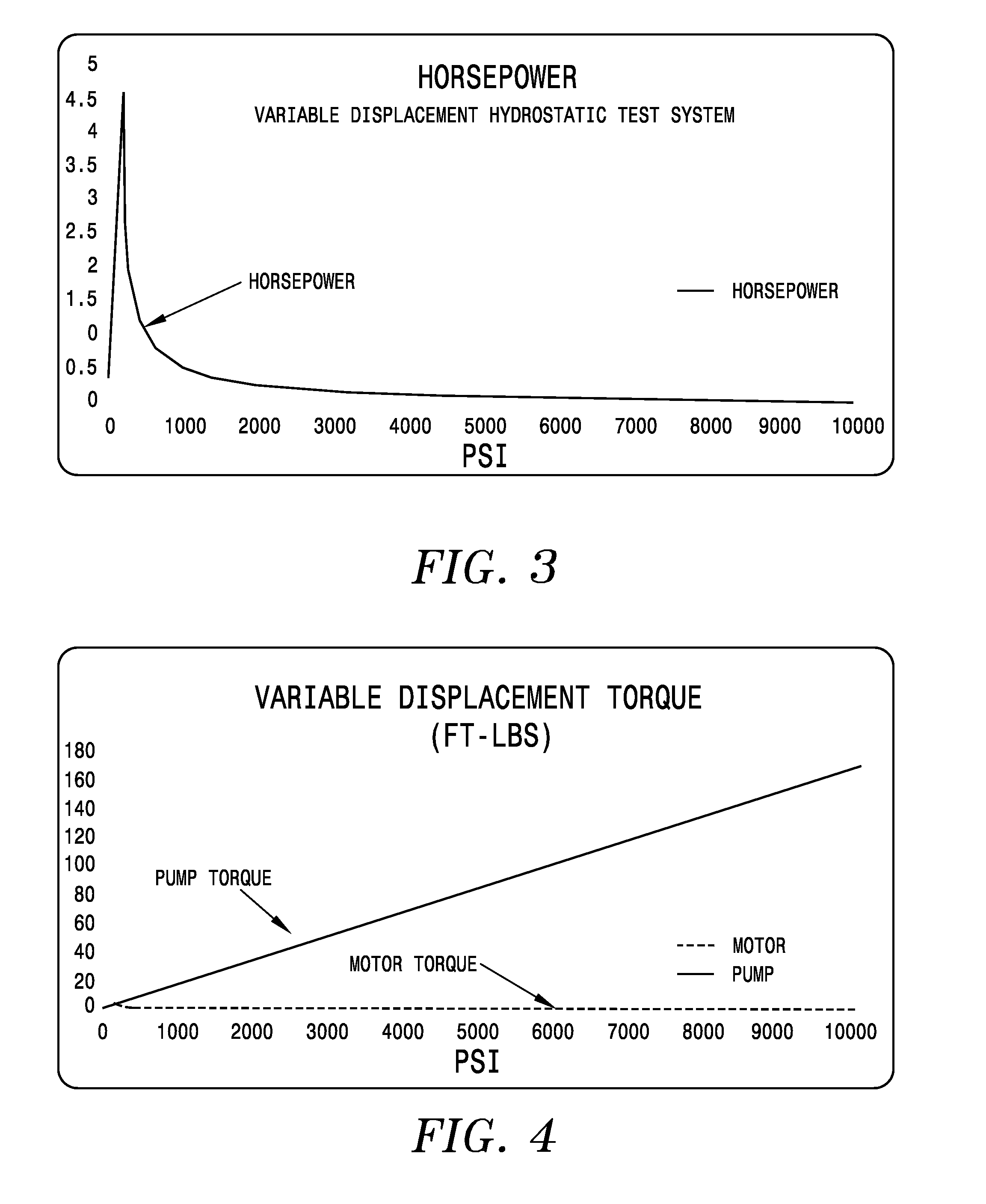Hydrostatic and Vibration Test System for a Blowout Preventative
a test system and blowout prevention technology, applied in the direction of instruments, survey, borehole/well accessories, etc., can solve the problems of high formation pressure, troublesome testing process, and inability to change the equipment used to perform the test, so as to reduce physical size and energy requirements, the effect of high accuracy and responsive hydrostati
- Summary
- Abstract
- Description
- Claims
- Application Information
AI Technical Summary
Benefits of technology
Problems solved by technology
Method used
Image
Examples
second embodiment
[0023]FIG. 6 is a schematic of a second variable displacement hydrostatic test system according to the invention.
[0024]FIG. 7 is a schematic showing of a control system for the test apparatus of FIG. 5 or 6.
[0025]FIG. 8 is an algorithm processed in a computer processor.
[0026]FIG. 9 is a second algorithm processed in a computer processor.
DETAILED DESCRIPTION OF THE PREFERRED EMBODIMENTS
[0027]An embodiment of a variable displacement hydrostatic test system 10 is shown in FIG. 5. It includes a variable displacement hydraulic pump 12 driven by a suitable power source 18 such as an electric motor. Pump 12 is connected to a reservoir 42 containing hydraulic fluid. The pressure of fluid from the hydraulic pump is controlled by a valve 14 in a manner known in the art. Fluid from pump 12 enters intensifying pump 20 via valve 50. Intensifying pump 20 is connected to a source of water, or other suitable intensification fluid 45, via conduit 48.
[0028]Water under pressure exits intensifying pump...
embodiment 60
[0043]An additional embodiment 60 of the invention is shown in FIG. 6. Common elements from the embodiment of FIG. 5 have the same reference numerals.
[0044]In this embodiment the intensifying pump 26 which is of a well-known design includes a plunger 62 located in a hydrostatic chamber 63. A piston 69 is attached to the plunger 62 and is positioned within the hydraulic chamber 61.
[0045]A variable displacement hydraulic pump 12 which is driven by a prime motive source such as an electric motor 18 drives intensifier pump 26 via hydraulic lines 66 and 65 which are connected to the hydraulic power chamber 61 on either side of piston 69.
[0046]Variable displacement pump 12 may be of the type having a variable swash plate the position of which is controlled by a valve 14 in a manner known in the art.
[0047]Water from a reservoir 45 is drawn into hydrostatical chamber 63 through check valve 84 on the intake stroke of plunger 62 and is then directed to the blowout preventer 24 via check valve...
PUM
 Login to View More
Login to View More Abstract
Description
Claims
Application Information
 Login to View More
Login to View More - R&D
- Intellectual Property
- Life Sciences
- Materials
- Tech Scout
- Unparalleled Data Quality
- Higher Quality Content
- 60% Fewer Hallucinations
Browse by: Latest US Patents, China's latest patents, Technical Efficacy Thesaurus, Application Domain, Technology Topic, Popular Technical Reports.
© 2025 PatSnap. All rights reserved.Legal|Privacy policy|Modern Slavery Act Transparency Statement|Sitemap|About US| Contact US: help@patsnap.com



